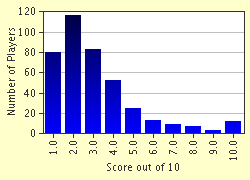Quiz Answer Key and Fun Facts
1. Morphology: Which hypothesis, which first appeared in Chomsky (1970), was a reaction to the programme of generative semantics?
2. Syntax: What name is given in Principles and Parameters theory to verbs such as 'believe', which apparently govern across maximal projections, unlike most verbs?
3. Phonology: Who wrote the seminal 'Grundzuege der Phonologie' (Basics of Phonology)?
4. Semantics: Which principle states that the meaning of an expression is determined by the meaning of its constituents and the way in which they are combined?
5. Which nineteenth-century German linguist devised (or at least formalised) the 'wave theory' of language change?
6. Syntax: In the Minimalist Programme, the 'external interfaces' have the initials PF and LF. PF stands for 'Phonetic Form' - what does LF stand for?
7. Phonetics: In the International Phonetic Alphabet, the symbol ! represents which sound?
8. Phonology: The important 1968 work by Chomsky and Halle, which introduced a new type of distinctive feature matrix, had what title?
9. Pragmatics: The conversational maxim 'Make your contribution as informative as is required' was devised by whom?
10. To what family do the languages Georgian, Mingrelian and Svan belong?
Source: Author
Matve
This quiz was reviewed by FunTrivia editor
LadyCaitriona before going online.
Any errors found in FunTrivia content are routinely corrected through our feedback system.

